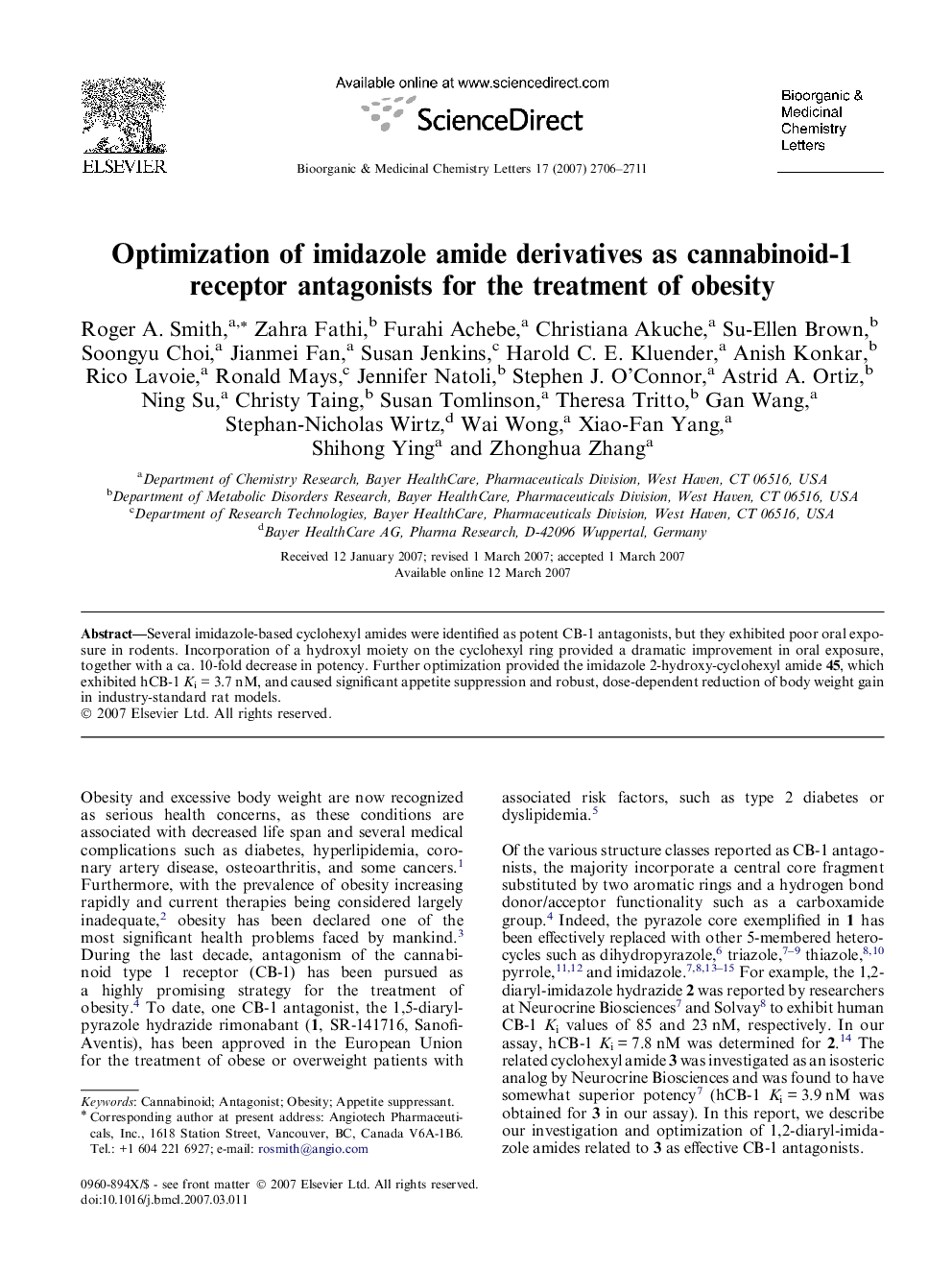| Article ID | Journal | Published Year | Pages | File Type |
|---|---|---|---|---|
| 1366683 | Bioorganic & Medicinal Chemistry Letters | 2007 | 6 Pages |
Several imidazole-based cyclohexyl amides were identified as potent CB-1 antagonists, but they exhibited poor oral exposure in rodents. Incorporation of a hydroxyl moiety on the cyclohexyl ring provided a dramatic improvement in oral exposure, together with a ca. 10-fold decrease in potency. Further optimization provided the imidazole 2-hydroxy-cyclohexyl amide 45, which exhibited hCB-1 Ki = 3.7 nM, and caused significant appetite suppression and robust, dose-dependent reduction of body weight gain in industry-standard rat models.
Graphical abstractImidazole-based cyclohexyl amides were identified as potent CB-1 antagonists. Incorporation of a hydroxyl moiety on the cyclohexyl ring provided a dramatic improvement in oral exposure in rodents, and further optimization provided 45, which caused significant appetite suppression and robust, dose-dependent reduction of body weight gain in industry-standard rat models.Figure optionsDownload full-size imageDownload as PowerPoint slide
